Top Tips for Designing Customer Satisfaction Surveys in 2025
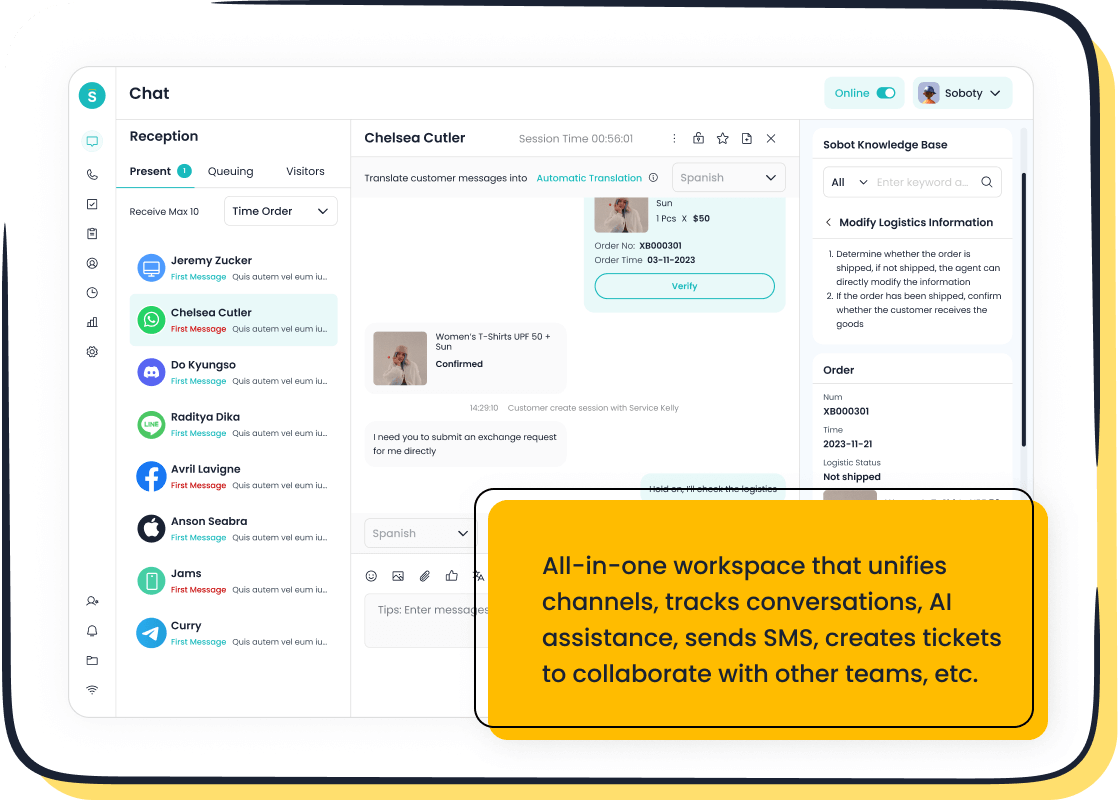
In 2025, understanding how your customers feel about your service matters more than ever. Why? Because their satisfaction drives your business forward. Studies show that 88% of customers are likely to repurchase after a great experience, and 50% would even pay more for exceptional service. These surveys aren't just about collecting feedback—they're about building loyalty and trust.
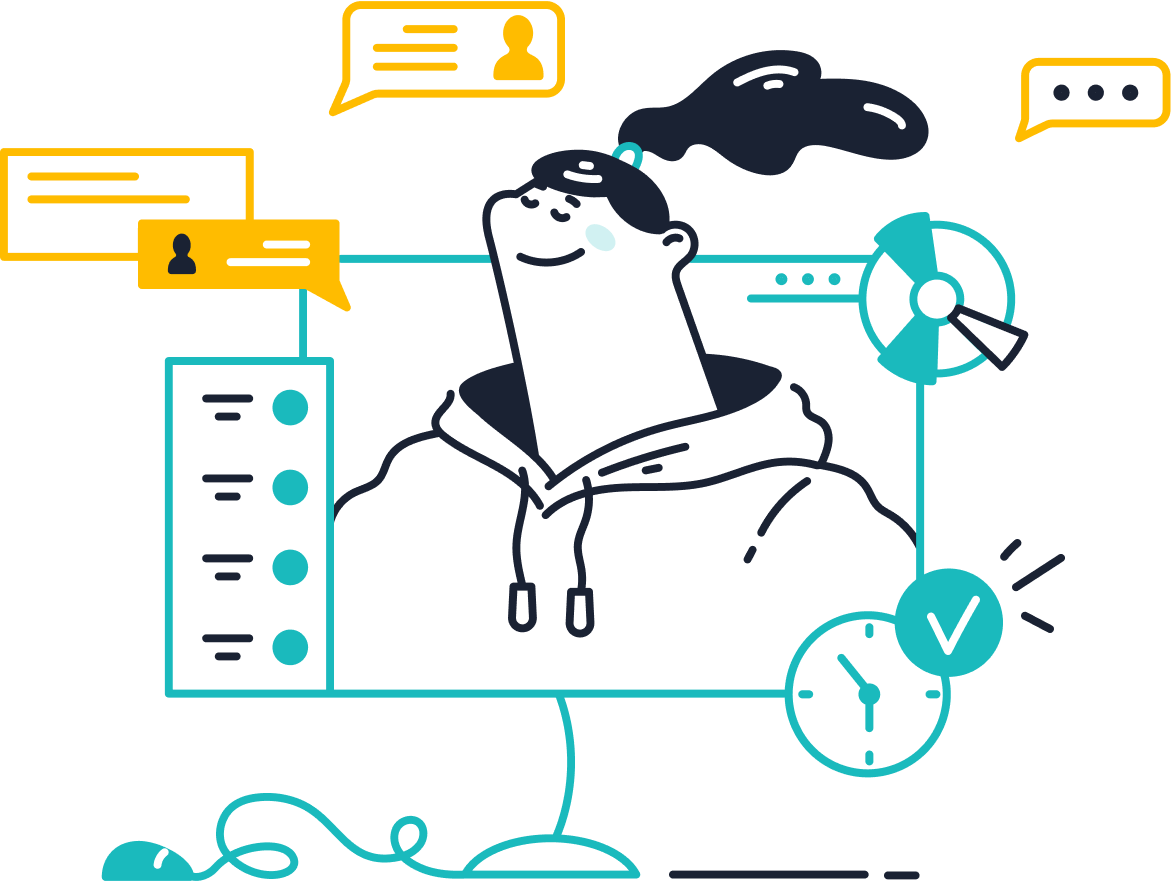
CSAT survey templates play a vital role in improving customer experience. They help you uncover what works and what doesn’t. Plus, with tools like Sobot’s Live Chat, gathering feedback becomes seamless. Imagine real-time insights that let you act quickly to enhance satisfaction. That’s the power of modern surveys.
Why Customer Satisfaction Surveys Are Crucial in 2025
The importance of measuring customer satisfaction for business growth
Measuring customer satisfaction is no longer optional—it’s essential for staying competitive in 2025. When you understand how satisfied your customers are, you can make smarter decisions without relying on guesswork. Businesses that focus on satisfaction often see an 80% increase in revenue. Why? Because happy customers stick around, recommend your services, and even spend more.
Metrics like Net Promoter Score (NPS), Customer Effort Score (CES), and CSAT give you actionable insights. These tools help you identify what’s working and what needs improvement. By monitoring satisfaction, you can build loyalty, reduce acquisition costs, and boost recurring revenue. It’s a win-win for both you and your customers.
How CSAT surveys drive customer experience improvements
CSAT surveys are your secret weapon for enhancing customer experience. They let you gather feedback directly from the source—your customers. For example, a leading e-commerce retailer used CSAT surveys to pinpoint issues with shipping times and product descriptions. Within six months, their satisfaction scores jumped from 75% to 85%.
Higher CSAT scores often lead to better retention and loyalty. When you act on feedback, you show customers that their opinions matter. This builds trust and keeps them coming back. Plus, satisfied customers are more likely to recommend your brand, helping you attract new business effortlessly.
Common pitfalls of ineffective surveys and how to avoid them
Not all surveys are created equal. Some common mistakes can hurt your results:
| Common Pitfalls | Description | Solutions |
|---|---|---|
| Lack of Follow-Up | Ignoring feedback damages trust. | Share results and outline action plans. |
| Overwhelming Length | Long surveys discourage participation. | Keep surveys concise (10-15 questions). |
| Ignoring Demographics | Aggregated data misses critical insights. | Segment data by demographics. |
To avoid these issues, design surveys with clear goals. Test them before launch to catch any flaws. And always communicate the results and your next steps. This transparency encourages participation and builds stronger connections with your customers.
Key Elements of an Effective Customer Satisfaction Survey
Defining clear objectives for your survey
Before you dive into creating a survey, ask yourself: What do you want to achieve? Defining clear objectives is the foundation of an effective customer satisfaction survey. Without a specific goal, your survey risks becoming a collection of random questions that don’t provide actionable insights.
For example, are you trying to measure overall satisfaction, identify pain points in your service, or evaluate a new product feature? Each objective requires a different approach. Narrowing your focus ensures your survey questions align with your goals. Instead of asking broad questions like, “How do you feel about our company?” you might ask, “How satisfied are you with the speed of our service?” This specificity helps you gather meaningful data.
Clear objectives also streamline data analysis. When you know what you’re looking for, interpreting customer survey responses becomes much easier. For instance, if your goal is to improve your CSAT score, you can focus on responses tied to satisfaction metrics. Remember, targeted goals lead to actionable insights, which ultimately help you enhance customer satisfaction.
Crafting concise and straightforward questions
Nobody likes a confusing or overly long survey. The key to keeping your customers engaged is crafting concise and straightforward questions. Simplicity is your best friend here. Use plain language and avoid technical jargon. For instance, instead of asking, “How would you evaluate the efficacy of our omnichannel communication solutions?” you could say, “How easy is it to contact us across different platforms?”
Short questions reduce cognitive load and make it easier for customers to respond. Stick to one idea per question to avoid confusion. For example, don’t ask, “How satisfied are you with our product quality and delivery speed?” Break it into two separate questions instead. This approach ensures clarity and improves the quality of your customer survey responses.
Closed-ended questions, like multiple-choice or rating scales, are particularly effective. They provide uniform responses, making analysis faster and more accurate. However, don’t shy away from including a few open-ended questions. These allow customers to share detailed feedback, offering deeper insights into their experiences.
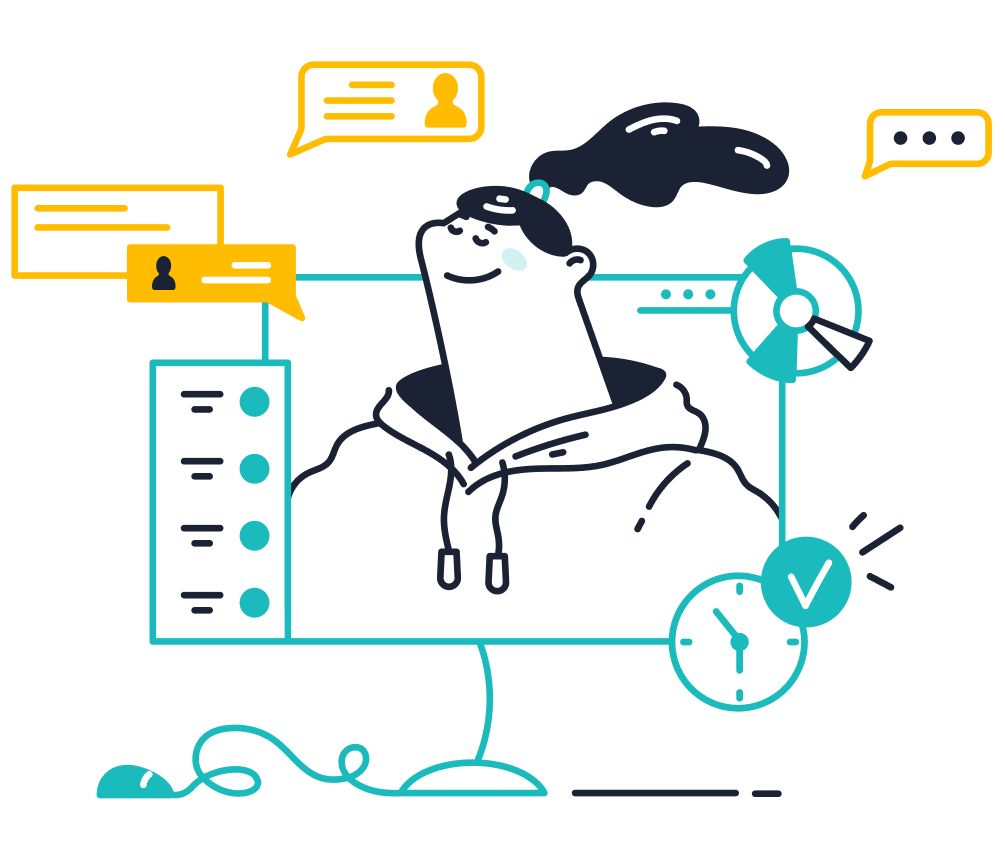
Sobot’s Live Chat feature can help you gather real-time feedback with quick, targeted questions. For instance, after resolving a customer query, you can ask, “Was this chat helpful?” This immediate feedback not only improves your CSAT score but also strengthens customer trust.
Using consistent rating scales for better analysis
Rating scales are a staple in customer satisfaction surveys, but consistency is key. Imagine asking one question with a 1-5 scale and another with a 1-10 scale. It’s confusing for customers and complicates your data analysis. Stick to a uniform scale throughout your survey to ensure clarity and reliability.
A five-point scale is often a sweet spot. It’s simple enough for customers to understand yet detailed enough to capture varying levels of satisfaction. For example, you might ask, “How satisfied are you with our service?” with options ranging from “Very Dissatisfied” to “Very Satisfied.” Including a neutral option, like “Neither Satisfied nor Dissatisfied,” can also provide valuable insights. Research shows that 10-20% of respondents choose neutral options, which can help you identify areas needing improvement.
Cultural differences can also influence how customers respond to rating scales. For instance, some cultures may avoid selecting the highest rating, even if they’re satisfied. Tools like Sobot’s built-in analytics can help you account for these variations, ensuring your data remains accurate and actionable.
By using consistent rating scales, you make it easier to compare responses across different customer surveys. This consistency helps you track trends over time, identify patterns, and make data-driven decisions to improve customer satisfaction.
Incorporating open-ended questions for deeper insights
If you want to truly understand your customers, open-ended questions are your best friend. These questions let your customers share their thoughts in their own words, giving you insights that closed-ended questions simply can’t provide. For example, instead of asking, “Did you like our service?” you could ask, “What did you think about your experience with us?” This approach encourages detailed and personalized responses.
Open-ended questions are like a treasure chest of information. They can reveal unexpected insights, like new pain points or even ideas for improvement. Imagine asking, “What’s one thing we could do to make your experience better?” A customer might suggest a feature you hadn’t even considered. These responses help you see your business from their perspective, which is invaluable for growth.
Here’s why open-ended questions are so effective:
| Benefit | Why It Matters |
|---|---|
| Richer data | Customers can express themselves freely, leading to more meaningful insights. |
| Encourages detailed responses | Follow-up questions can dig deeper into specific issues or experiences. |
| Uncovers unexpected perspectives | Customers might highlight problems or opportunities you hadn’t noticed before. |
For instance, qualitative research shows that asking open-ended questions like, “Can you describe your experience with our product?” often uncovers layers of insight that closed-ended questions miss. These responses can guide your next steps, whether it’s improving a product or refining your service.
Sobot’s Live Chat makes it easy to incorporate open-ended questions into your customer satisfaction surveys. After a chat session, you can ask something like, “What could we have done better during this interaction?” The platform’s built-in analytics can then help you categorize and analyze these responses, turning raw feedback into actionable insights. This not only improves your CSAT score but also strengthens your relationship with your customers.
Pro Tip: Don’t overwhelm your customers with too many open-ended questions. A good balance is one or two open-ended questions alongside closed-ended ones. This keeps your survey engaging while still gathering valuable data.
Testing your CSAT survey template before deployment
Before you send out your customer satisfaction survey, testing it is a must. Think of it as a dress rehearsal. Testing helps you catch issues like confusing questions, technical glitches, or even poor survey flow. Skipping this step could lead to low response rates or unreliable data.
There are several ways to test your survey effectively:
| Testing Method | Purpose |
|---|---|
| Cognitive Interviews | Check if your questions make sense to someone unfamiliar with your survey. |
| Usability Testing | Identify interface problems, especially for mobile-friendly designs. |
| Pilot Studies | Test the entire process with a small group to spot any issues. |
For example, running a pilot study with a small group of customers can help you identify ambiguous questions. If participants struggle to answer a question, you’ll know it needs rephrasing. Usability testing is also crucial, especially since many customers will complete your survey on their phones. A clunky interface could frustrate them and lead to drop-offs.
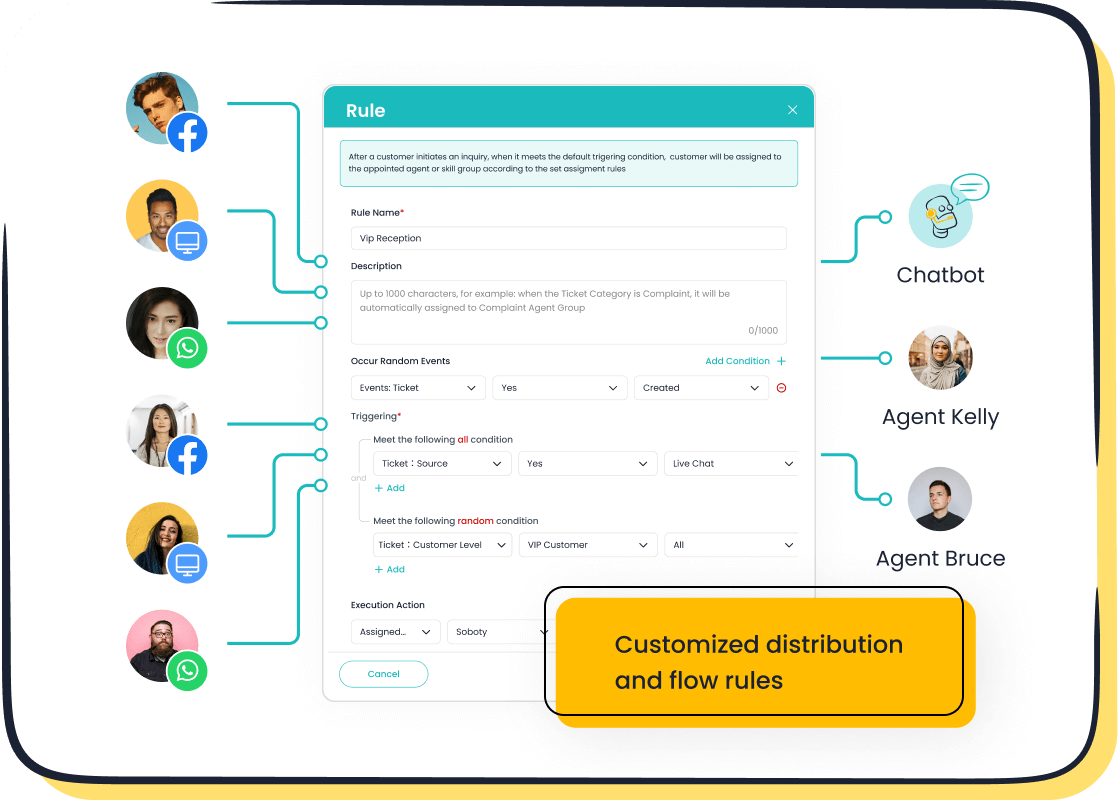
Sobot’s Live Chat can streamline this process. You can use it to gather real-time feedback on your survey during the testing phase. For instance, if a customer mentions that a question is unclear, you can tweak it immediately. This ensures your final survey is polished and ready to deliver a seamless experience.
Quick Tip: Always test your survey on multiple devices and browsers. This ensures it works smoothly for all your customers, no matter how they access it.
By testing your CSAT survey template, you’re setting yourself up for success. A well-tested survey not only improves response rates but also ensures the data you collect is accurate and actionable. This means you can confidently use the insights to enhance your customer experience.
Best Practices for Boosting Survey Response Rates
Timing your survey for optimal engagement
Timing is everything when it comes to customer surveys. Sending your survey at the right moment can make all the difference in how many responses you get. For example, asking for feedback immediately after a customer interaction—like a purchase or a support call—keeps the experience fresh in their mind. This increases the likelihood of honest and detailed responses.
Consider the habits of your audience. If your customers are busy professionals, sending surveys during work hours might not be ideal. Instead, try early evenings or weekends when they’re more likely to have time. Research shows that surveys sent on Tuesdays and Thursdays tend to perform better than those sent on Mondays or Fridays. Timing isn’t just about the day—it’s also about the hour. A survey sent at 10 a.m. might get more attention than one sent late at night.
Short surveys also help. If customers know they can complete your survey in under two minutes, they’re more likely to respond. Tools like Sobot’s Live Chat can help you time your surveys perfectly. For instance, after resolving a query, you can ask, “How satisfied are you with our service today?” This immediate follow-up captures valuable feedback while the interaction is still fresh.
Personalizing surveys to enhance customer connection
Personalization isn’t just a buzzword—it’s a proven way to boost engagement. When you tailor your customer surveys to reflect individual preferences, customers feel valued. Addressing them by name and referencing their recent interactions makes the survey feel less generic and more relevant.
Imagine receiving a survey that says, “Hi Alex, we noticed you recently purchased a laptop from us. How satisfied are you with your experience?” This approach shows that you’re paying attention to their journey. It also encourages them to share their thoughts because the survey feels directly connected to their experience.
Personalization goes beyond names. You can segment your surveys based on demographics, purchase history, or even customer loyalty tiers. For example, VIP customers might receive a more detailed survey asking about premium services, while new customers might get a simpler one focused on onboarding. Sobot’s omnichannel solutions make this easy by consolidating customer data into one workspace. This allows you to craft surveys that resonate with each customer group.
Pro Tip: Use personalized email subject lines like “We’d love your feedback, Alex!” to grab attention. Studies show that personalized invitations can increase survey response rates by up to 30%.
Offering incentives to encourage participation
Let’s face it—everyone loves a good reward. Offering incentives is one of the most effective ways to motivate customers to complete your surveys. Whether it’s a discount code, a gift card, or entry into a prize draw, incentives make the effort feel worthwhile.
Empirical studies back this up. Research shows that monetary incentives, like cash or gift cards, lead to higher response rates compared to vouchers or lotteries. For instance, a study titled The Use and Effects of Incentives in Surveys found that offering even small rewards significantly boosts participation. Customers appreciate tangible benefits, and they’re more likely to engage when they know there’s something in it for them.
When choosing an incentive, think about what your audience values. A retail customer might prefer a discount on their next purchase, while a tech-savvy customer might appreciate free access to a premium feature. Keep the reward relevant to your business and your audience. Sobot’s Live Chat can help you automate this process. After a survey is completed, you can instantly send a thank-you message along with the promised reward.
Quick Tip: Mention the incentive upfront in your survey invitation. For example, “Complete this 2-minute survey and get 10% off your next order!” This transparency encourages participation and builds trust.
Ensuring mobile-friendly survey designs for convenience
Have you ever tried filling out a survey on your phone, only to give up because it didn’t fit the screen? That’s exactly what you want to avoid when designing customer surveys. In 2025, mobile-friendly surveys aren’t just a nice-to-have—they’re essential. With 56% of online surveys completed on mobile devices globally, optimizing for smaller screens ensures you don’t miss out on valuable feedback.
Mobile-friendly designs make it easy for customers to respond anytime, anywhere. This convenience leads to higher response rates and more diverse insights. Think about it: a busy parent waiting in line at the grocery store or a commuter on the subway can quickly answer your survey if it’s mobile-optimized. By making surveys accessible, you’re opening the door to feedback from a wider audience.
Here’s how you can make your surveys mobile-friendly:
- Keep it short and sweet: Limit your survey to 5-10 questions. Long surveys can feel overwhelming on a small screen.
- Use responsive design: Ensure your survey adjusts seamlessly to different screen sizes and orientations.
- Simplify navigation: Include large, tappable buttons and avoid requiring customers to zoom in to read text.
- Test on multiple devices: Check how your survey looks on various smartphones and tablets before launching.
Sobot’s Live Chat platform can help you create effective in-app csat surveys that are mobile-friendly. With its customizable widgets and responsive design, you can ensure your surveys look great on any device. Plus, the built-in analytics let you track how mobile users engage with your surveys, giving you insights to refine your approach.
Quick Tip: Add a progress bar to your mobile surveys. It shows customers how much is left, encouraging them to complete it.
By prioritizing mobile-friendly designs, you’re not just improving the user experience—you’re also boosting your chances of collecting actionable feedback. And that’s a win for both you and your customers.
Leveraging Sobot Live Chat for real-time feedback collection
Imagine this: A customer just finished chatting with your support team. They’re still thinking about the interaction, and their experience is fresh in their mind. This is the perfect moment to ask for feedback. Real-time feedback collection is one of the most effective ways to measure csat and improve satisfaction.

Sobot Live Chat makes this process seamless. After a chat session, you can automatically prompt customers with a quick survey. For example, you might ask, “How satisfied are you with the support you received today?” or “What could we have done better?” These in-app surveys are short, targeted, and perfectly timed to capture honest responses.
Here’s why real-time feedback is so powerful:
- It’s immediate: Customers don’t have to remember their experience days later. You get their thoughts while the interaction is still fresh.
- It’s actionable: If a customer reports dissatisfaction, you can address the issue right away, turning a negative experience into a positive one.
- It builds trust: Asking for feedback shows customers you value their opinions and are committed to improving.
Sobot Live Chat goes beyond just collecting feedback. Its AI-powered tools analyze responses in real-time, helping you identify trends and areas for improvement. For instance, if multiple customers mention slow response times, you can adjust your workflows to address the issue. The platform also supports multilingual surveys, ensuring you can connect with a global audience.
Pro Tip: Use open-ended questions in your real-time surveys to uncover deeper insights. For example, “What’s one thing we could do to improve your experience?”
By leveraging Sobot Live Chat, you’re not just gathering feedback—you’re creating a dialogue with your customers. This approach strengthens relationships, boosts csat scores, and ultimately enhances satisfaction.
Emerging Trends in Customer Satisfaction Surveys in 2025
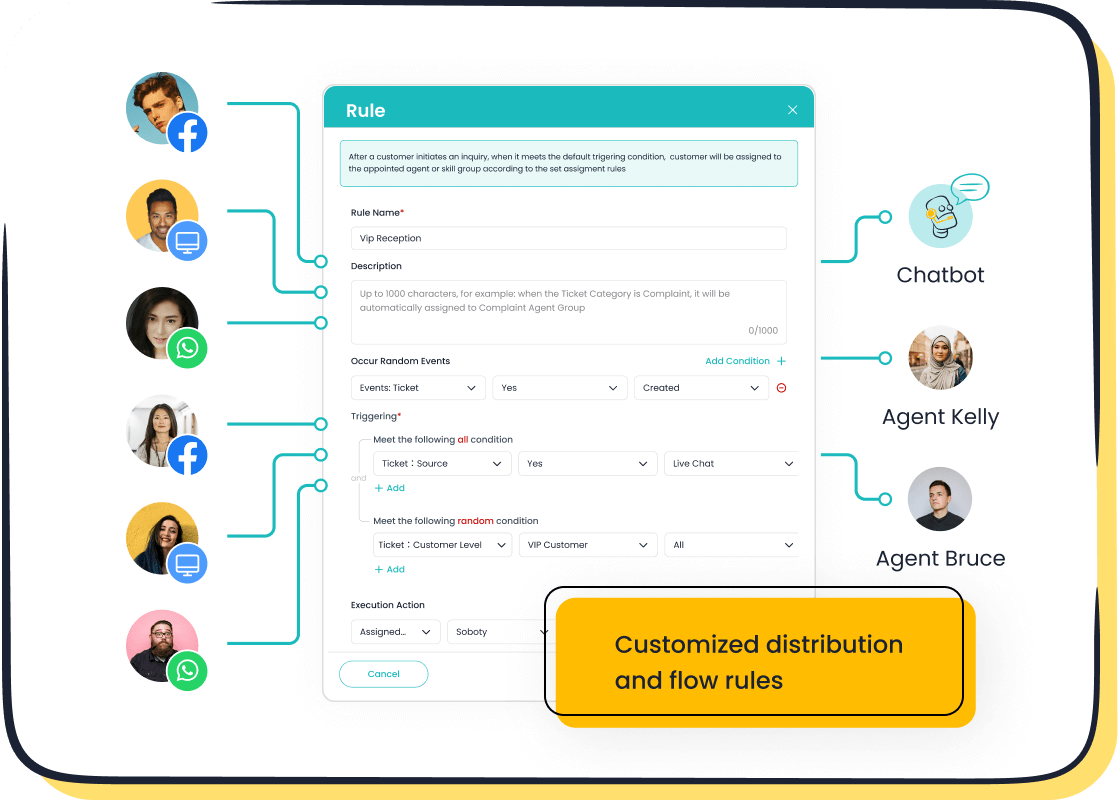
AI-driven tools for smarter survey insights
Artificial intelligence (AI) is revolutionizing how you gather and analyze customer feedback. These tools automate repetitive tasks, making surveys faster and more efficient. For instance, AI can analyze thousands of responses in seconds, identifying trends and patterns that would take humans days to uncover. This means you can act on insights almost immediately.
Platforms like GWI Spark simplify the process even further. They help you understand customer behaviors and preferences without needing a data science degree. Plus, the insights are based on robust global survey data, ensuring accuracy. Imagine knowing exactly what your customers want before they even tell you. That’s the power of AI.
Here’s why AI is a game-changer for surveys:
- It reduces manual work, saving you time and resources.
- It identifies hidden trends, giving you a competitive edge.
- It ensures data accuracy, so you can trust the results.
By 2025, 85% of customer interactions will be managed without human intervention. AI isn’t just a trend—it’s the future of customer satisfaction.
Real-time feedback through omnichannel solutions like Sobot
Real-time feedback is transforming how you measure csat. With omnichannel solutions like Sobot, you can collect feedback instantly, whether it’s through live chat, social media, or email. This immediacy ensures you capture your customers’ thoughts while their experience is still fresh.
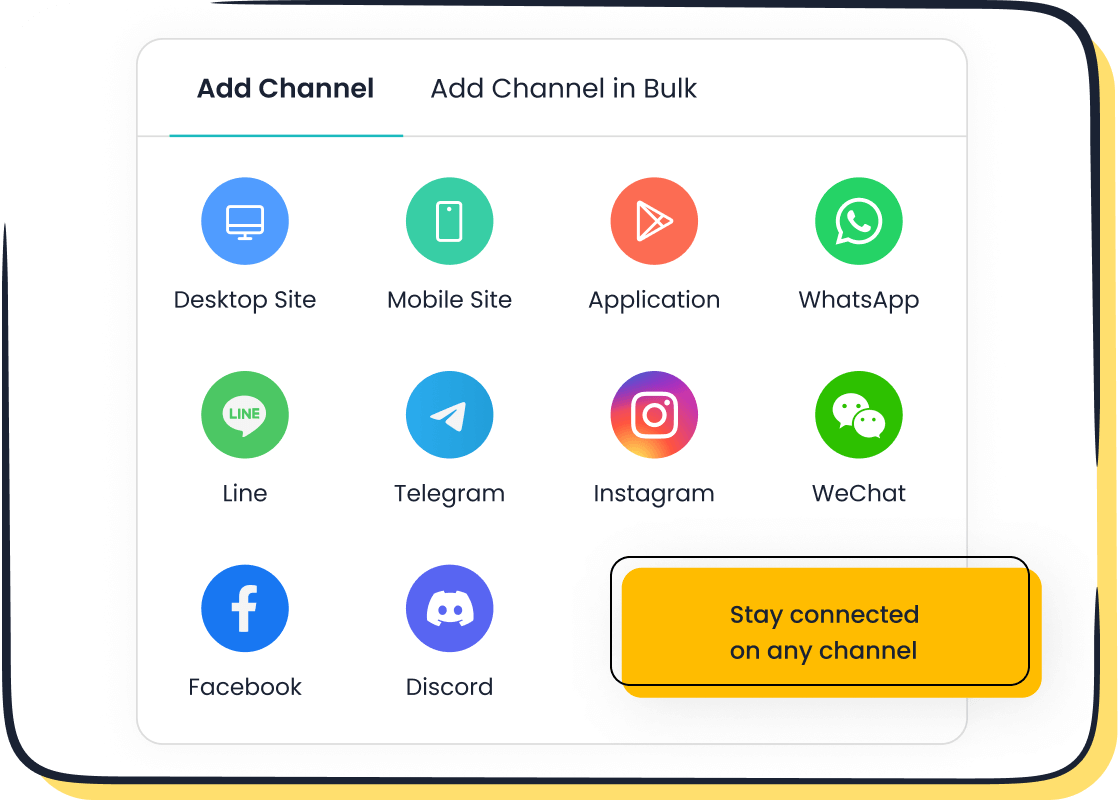
For example, after a live chat session, Sobot can prompt customers with a quick survey. Questions like “How satisfied are you with our service today?” provide instant insights. This approach not only improves your csat score but also strengthens customer trust.
The numbers speak for themselves:
| Statistic Description | Value |
|---|---|
| Customer satisfaction rate | 95%+ |
| Positive feedback increase | 96%+ |
| Problem resolution rate | 85% |
| Self-service question resolution | 22.2% |
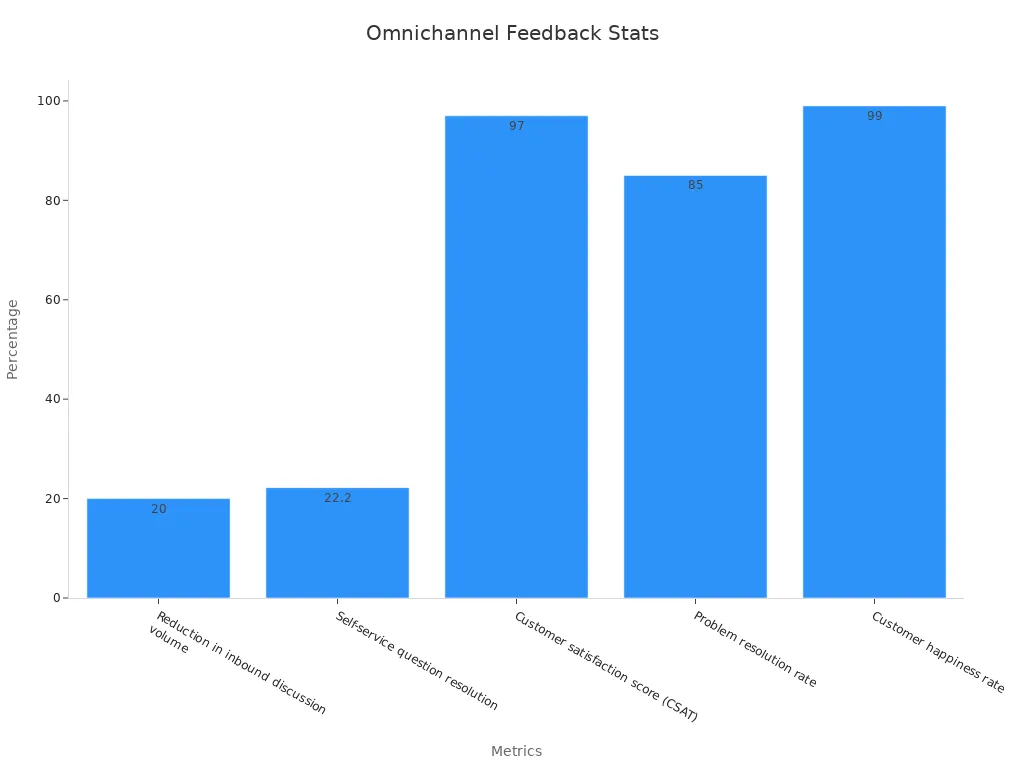
Real-time feedback also allows you to address issues immediately. If a customer reports dissatisfaction, you can resolve the problem on the spot. This proactive approach boosts satisfaction and loyalty.
Personalized survey experiences using customer data
Personalization is no longer optional—it’s expected. Customers want surveys that feel tailored to their unique experiences. By using customer data, you can create surveys that resonate on a personal level. For example, referencing a recent purchase or interaction makes the survey feel relevant and engaging.
Did you know 80% of customers prefer brands that offer personalized experiences? This isn’t just about adding their name to the survey. It’s about understanding their journey and asking questions that matter to them. For instance, a survey for a VIP customer might focus on premium services, while a new customer might be asked about their onboarding experience.
Sobot’s omnichannel solutions make personalization easy. By consolidating customer data into one platform, you can segment your audience and craft surveys that speak directly to their needs. This approach not only improves response rates but also provides more meaningful insights.
Pro Tip: Use personalized subject lines like “We’d love your feedback on your recent purchase!” to grab attention and encourage participation.
Personalized surveys show your customers that you value their opinions. This strengthens your relationship and ensures you’re always meeting their expectations.
Integration of surveys with advanced analytics platforms
Integrating your customer satisfaction surveys with advanced analytics platforms can transform how you understand and act on feedback. These platforms don’t just collect data—they turn it into actionable insights that help you make smarter decisions faster. Imagine having all your survey responses, customer interactions, and business metrics in one place. That’s the power of integration.
Here’s what makes these platforms so valuable:
| Feature/Benefit | Description |
|---|---|
| Data Integration Capabilities | Combines data from multiple sources for a unified view. |
| Real-time Analytics | Delivers instant insights by continuously monitoring data streams. |
| Advanced Predictive Analytics | Uses past data to predict future trends and customer behavior. |
| Enhanced Customer Experiences | Improves interactions through targeted strategies based on better insights. |
| Cost Reduction | Saves money by reducing the need for multiple tools and integrations. |
When you connect your surveys to these platforms, you unlock several benefits. You can reduce costs by minimizing integration efforts. You’ll also gain a complete view of your customers, combining data from every touchpoint. This helps you analyze their journey in detail and create marketing strategies that truly resonate.
Advanced analytics platforms also automate repetitive tasks, like sorting survey responses or generating reports. This reduces errors and frees up your time for more strategic work. Plus, with tools like Sobot’s built-in analytics, you can visualize complex data in simple, easy-to-read formats. These visualizations make it easier to share insights with your team and act quickly.
Pro Tip: Use real-time analytics to monitor customer feedback as it happens. This lets you address issues immediately, improving satisfaction and loyalty.
By integrating surveys with advanced analytics, you’re not just collecting feedback—you’re turning it into a roadmap for success.
Examples of Effective CSAT Survey Designs
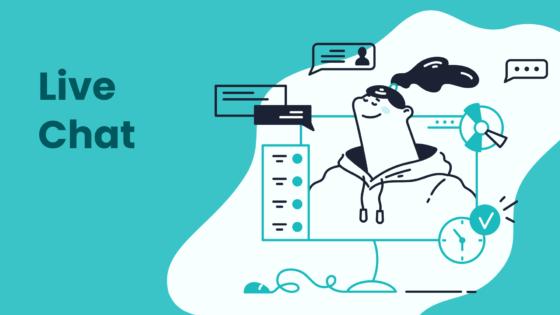
Simple CSAT survey templates for quick feedback
Sometimes, simplicity is all you need to gather meaningful feedback. Simple CSAT survey templates are perfect for quick insights, especially when you want to measure satisfaction without overwhelming your customers. These templates often include straightforward questions like, “How satisfied are you with our service?” paired with a rating scale. They’re easy to complete and encourage higher response rates.
Here are some common templates you can use:
| Survey Template Type | Description |
|---|---|
| Net Promoter Score® | A single question that provides fast insights into customer satisfaction. |
| Customer Satisfaction Score | A simple tool to gauge overall customer satisfaction with flexibility in response options. |
| Customer Effort Score | Measures how easy it was for customers to achieve their goals, focusing on results. |
| Open-ended Questions | Gathers detailed qualitative feedback from customers, useful for loyal customers. |
| Long-form Customer Satisfaction Survey | Collects in-depth responses for a comprehensive understanding of customer experiences. |
These templates are versatile and widely used by brands to collect feedback quickly. For instance, a yes/no question or a 1-5 rating scale can help you identify satisfaction trends without requiring much effort from your customers. Sobot’s Live Chat makes it even easier by integrating these templates into real-time interactions, ensuring you capture feedback while it’s still fresh.
Advanced survey designs for comprehensive insights
When you need deeper insights, advanced survey designs are the way to go. These surveys go beyond basic questions to explore customer experiences in detail. They’re ideal for understanding complex issues or gathering feedback from specific customer segments.
To make your advanced surveys effective, consider these strategies:
- Use open-ended questions to encourage detailed feedback. For example, “What’s one thing we could improve about your experience?”
- Ensure a logical question flow to keep respondents engaged and minimize confusion.
- Target specific customer groups, like VIPs or new users, for tailored insights.
Timing also plays a crucial role. Sending surveys after key milestones, like a product purchase or service interaction, ensures relevance. Sobot’s omnichannel solutions can help you time your surveys perfectly and deliver them through the right channels, whether it’s email, social media, or live chat. This approach not only boosts response rates but also provides richer data for analysis.
Case studies: How Sobot helped Samsung achieve a 97% satisfaction rate
Samsung’s journey with Sobot is a prime example of how effective CSAT survey designs can transform customer satisfaction. Facing challenges with fragmented communication channels and data silos, Samsung turned to Sobot’s all-in-one contact center solution. This integration allowed Samsung to unify its customer surveys across multiple platforms, ensuring consistent feedback collection.
Sobot’s platform also enabled Samsung to implement real-time CSAT surveys after customer interactions. These surveys included targeted questions like, “How satisfied are you with the resolution provided?” The results were remarkable. Samsung achieved a 97% satisfaction rate and a 30% boost in agent efficiency. By acting on the feedback collected, Samsung improved its service quality and strengthened customer loyalty.
This case study highlights the power of well-designed surveys combined with the right tools. With Sobot’s solutions, you can replicate Samsung’s success and take your customer satisfaction to new heights.
Designing effective customer satisfaction surveys is more than just a business task—it’s a way to connect with your customers and build lasting relationships. By focusing on clear objectives, concise questions, and personalized experiences, you can gather insights that truly matter. Emerging trends like AI-driven tools and real-time feedback through omnichannel platforms make it easier than ever to understand your customers and act quickly.
Here’s a quick recap of actionable strategies for 2025:
| Actionable Strategy | Benefit |
|---|---|
| Reduce customer churn | Proactively resolving issues keeps customers satisfied and loyal. |
| Deliver omnichannel support | Streamlined communication enhances brand credibility. |
| Provide instant response with live chat | Quick resolutions improve satisfaction for 89% of consumers. |
| Measure customer satisfaction regularly | Regular surveys ensure you stay aligned with customer expectations. |
Sobot’s Live Chat is a game-changer for collecting real-time feedback and delivering instant support. With tools like these, you can create surveys that not only measure satisfaction but also drive meaningful improvements. Start transforming your customer experience today!
FAQ
1. How long should a customer satisfaction survey be?
Keep it short—10 to 15 questions max. Customers prefer surveys that take less than 2 minutes to complete. Short surveys increase response rates and ensure you get quality feedback without overwhelming your audience.
2. What’s the best time to send a survey?
Timing matters! Send surveys right after a customer interaction, like a purchase or support call. This captures fresh feedback. Avoid weekends or late nights; weekdays during mid-morning or early evening work best.
3. Can I use incentives to boost survey responses?
Absolutely! Offer rewards like discounts, gift cards, or prize entries. Customers love incentives, and they’re proven to increase participation rates. Just make sure the reward aligns with your audience’s preferences.
4. Should I include open-ended questions in my survey?
Yes, but keep it balanced. One or two open-ended questions let customers share detailed feedback. For example, ask, “What could we improve?” This gives you deeper insights without making the survey too long.
5. How can Sobot Live Chat help with surveys?
Sobot Live Chat lets you collect real-time feedback after customer interactions. It automates surveys, analyzes responses instantly, and even supports multilingual options. This makes gathering insights quick and effortless.
See Also
Enhancing Customer Satisfaction Through Live Chat Strategies
Effective Practices for Managing Call Center Quality
Best Customer Feedback Software Options for 2024
